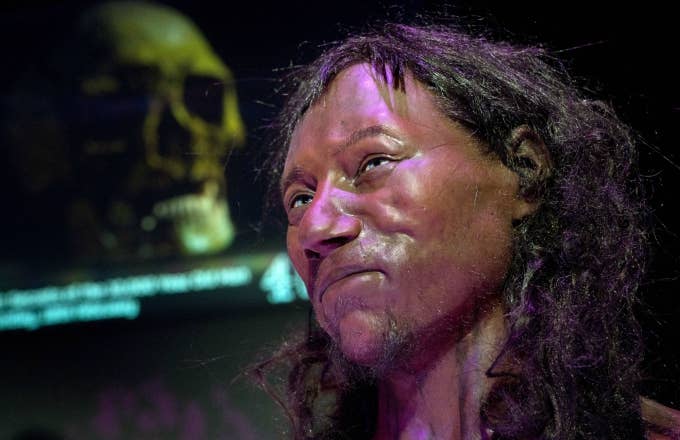
Well, well, well. It looks like the earliest inhabitants of Britain were a bit darker than previously thought, with new findings suggesting early Britons had "dark to black skin, curly dark hair, and blue eyes," according to Mashable.
A 10,000-year-old skeleton known as Cheddar Man, found back in 1903, was partially reconstructed after extensive research done by a team of scientists from London's Natural History Museum. By using genetic information obtained by drilling a hole into the skull, they were able to recreate the skull's full face by analyzing the bone powder they extracted.
In a press release sent to Mashable, Professor Ian Barnes—the Research Leader in Ancient DNA at the Natural History Museum—said, "Cheddar Man is one of the oldest human specimens that we’ve worked with and yet the preservation of DNA has been good enough to recover huge amounts of information about his appearance and ancestry." From the extracted bone powder, they were able to get an entire genome to gather a more detailed look at what his life would have been like, including his appearance and migration patterns.
Before this research was completed, it was always assumed that Cheddar Man would have had pale skin and light hair, and previous reconstructions depicted him as such. But this development suggests he was of African descent and migrated through the Middle East before heading to Europe via a land bridge used to connect Britain to the rest of Europe.
The findings come ahead of a documentary being released on British network Channel 4 about Cheddar Man titled First Brit: Secrets of the 10,000 Year Old Man. It airs Sunday, Feb. 18.

